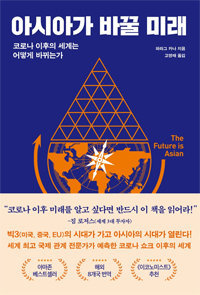Why does US counter China’s initiative?
Why does US counter China’s initiative?
Posted January. 02, 2021 08:04,
Updated January. 02, 2021 08:04

“Can Asians Think?” is the provocative title of a book written by Kishore Mahbubani in 1993. In the book, Mahbubani, dean of the Lee Kuan Yew School of Public Policy at National University of Singapore, warned that the tide was changing and Asia had more to teach the West. The author underlined that it was time to break away from the colonialist thinking, “Can Asians think?” but to study what Asians think.
Twenty years later, Asia’s elevated status is demonstrated by economic figures. The Regional Comprehensive Economic Partnership (RCEP) signed by 15 countries, including South Korea, China, Japan, and Australia in November last year was called the biggest free trade agreement (FTA) in the world since the combined population and gross domestic product (GDP) of the member countries totaled 2.2 billion and 26.2 trillion dollars, respectively. In his new book, Mahbubani affirms that the global landscape will be rewritten from “America First” to “Asia First,” introducing unknown sides of Asia.
The author begins with the ancient Asian civilization. He gives a brief summary of the civilizations of India, West Asia, and East Asia, which were hidden in the shadow of the world history that focused on the West, such as Ancient Greek civilization. He then introduces the basic knowledge and events on major political, economic, social, and cultural aspects of Asia. The author also deals with topics of the time, such as why Australia and Russia began Asianization early on and why the U.S. wants to counter China’s “One Belt One Road” initiative.
It is interesting that the past 20 years, from the perspective of Asia, has been the era of incompetence by George W. Bush, the era of insincerity by Barack Obama, and the era of uncertainty by Donald Trump, and that, contrary to popular belief in the West, Asia is not centered around China. While helping readers to look at the current status of entire Asia, including India and Southeast Asia, the book has its limits as it sets Westerners, who are ignorant of Asia, as its readers.
Born in India, the author works as an international relations expert in the U.S. and Europe and is currently settled in Singapore. The original title of the book is “The Future is Asian.”
Min Kim kimmin@donga.com







